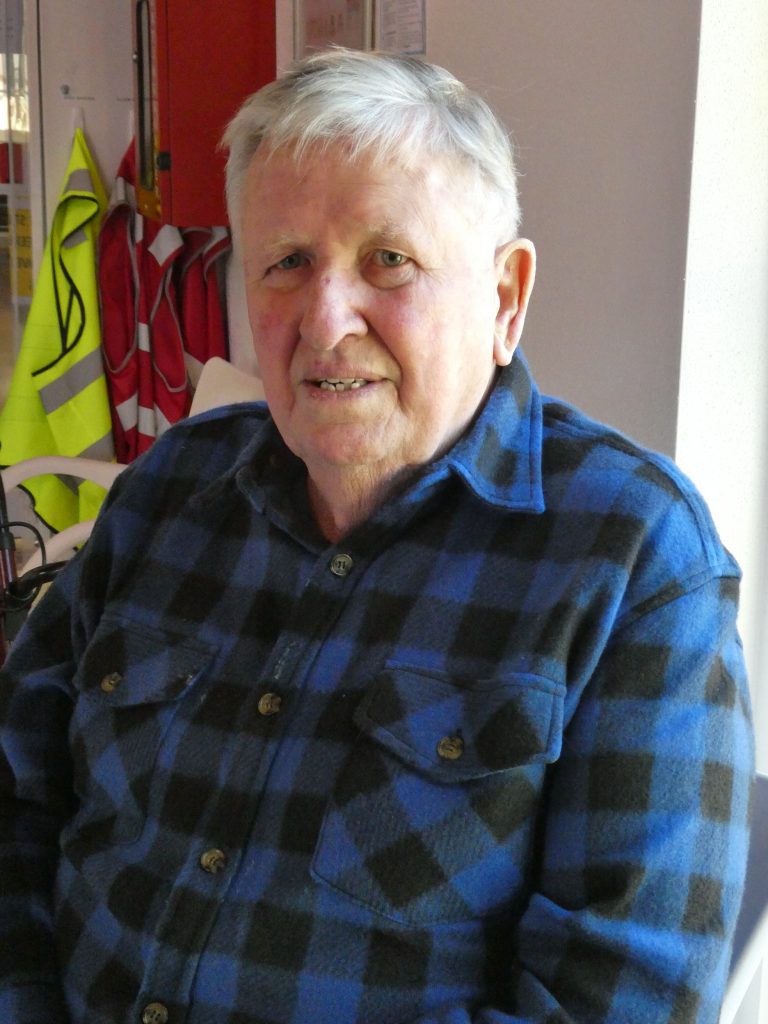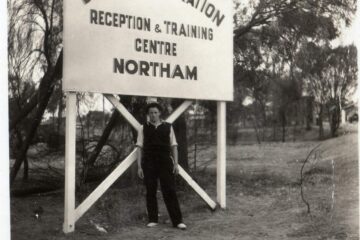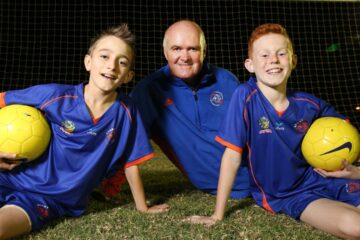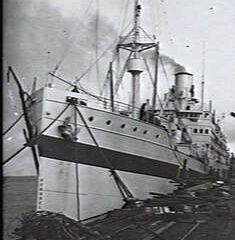
Bill Hunt is living in a low-care unit of Prins Willem Alexander Village (PWA) in Brisbane because he has severe vision limitations. In spite of his English name, he was born in Assen (Drenthe) in 1934, named Willem Hoekstra, his father was Hans Hoekstra from Heerenveen, Friesland, and his mother was Roelie Koops from Stadskanaal (Groningen). Bill’s parents lived in Assen and had four children, Bill is the oldest and he was followed by three sisters.
Father Hans Hoekstra worked as a builder for Bredero’s Bouwbedrijf (construction company). The company was based in Utrecht, but Hans travelled all over Western Europe as team leader for various projects. Willem attended primary school in Assen and high school in Apeldoorn.
In 1951 father Hans moved to Australia to work at the Snowy Hydro project as a contractor for the Civil & Civic (C&C) company. This company was founded, as an Australian building contractor, by Dutchman Dick Dusseldorp in 1951, on behalf of building companies Bredero’s Bouwbedrijf and The Royal Dutch Harbour Company. They installed housing for the Snowy workers.
Willem Hoekstra, his mother and two sisters, followed father Hans and came to Australia in 1952 on the Johan van Oldenbarnevelt. Willem was 17 years old. His third sister was born some years later in Sydney.
As they were not migrants in the usual way, they were met at the quay in Sydney by a Greyhound bus sent by C&C, that took them and family members of other C&C employees directly to Cooma. They moved into one of the 200 pre-fab houses imported from Finland.
Willem, who was called Bill now, obtained a car and truck driving license, and drove grocery supplies for the Snowy project from Cooma to Tumut, Khancoban or other destinations in the project area. His cargo were mainly fresh supplies that arrived daily in Cooma by train and needed to be delivered the same day. That meant a lot of driving in snow and ice.
The distance from Cooma to Khancoban is about 170km via the Snowy Highway and the Tooma Rd, and these days it takes about two and a half hours to drive. But in the 1950s much of the road was not paved, and the Tooma Rd is alpine (very curvy) and narrow, often requiring snow chains, so it took much longer, up to five hours.
After three years, in 1955, Bill’s father got contracts with C&C for work in Canberra and the family moved to the suburb of O’Connor. In the ACT Bill also worked on C&C building projects, while studying engineering by university correspondence course, facilitated by C&C. On top of this Bill had a second job as a weekend taxi driver.
Also in 1955, Bill obtained Australian citizenship and Hoekstra became Hunt. After completing the engineering course, he worked full time as a civil engineer for C&C, and another ACT company.
In 1960, with the encouragement of some colleagues, Bill decided to start his own building engineering and construction company. He called it Hunt Constructions and the company operated all over eastern Australia. He wanted to keep the company small and friendly, thus he limited the projects he accepted so he never had to employ more than twenty staff.

This also meant that he had some leisure time left, which he filled with playing bridge, fishing or going to Saturday night dances in Canberra’s Albert Hall. It was at those dances that he met his wife to be, Faye. She was from Muswellbrook, but lived in Queanbeyan and worked in a clerical position for the Commonwealth Government. They got married in 1962 and Bill almost missed the wedding: it was a casual event on a Saturday afternoon, so the best man took him fishing in the morning, and their return got delayed by a bad storm.
This tendency to squeeze a lot of activities into a day eventually led to a divorce as his work caused him to be away a lot, and his hobbies added to that. Bill and Faye remained friends, and Bill kept in contact with their three children, one girl and two boys, who continued living in Lyons, ACT, with their mother after the divorce. Bill had moved to Belconnen.
His children are all over 50 now, one son teaches French cuisine at a college in Wollongong, the other son is a mobile expert mechanic specializing in high value cars in the ACT, and his daughter, Annette, is handicapped and lives with her mother in Lyons.
In 1982 Bill moved the company to Brisbane because mining was growing in Queensland and many shires had a need for more infrastructure. He had to change the company name as there was already a Hunt construction company in Qld. It was changed to W.E. Hunt & Partners. Most of his Canberra staff had moved with him and they continued to run the company as guest contractors. Business was good.
In 1996, after 36 years of operating the construction company, Bill had a serious heart attack and surgery. He was 62 and was advised by his doctors to give up the business. He followed this advice, and sold the company. He also had invested in a Chinese restaurant in the West End of Brisbane. The rented building required renovating so he sold the equipment and closed the restaurant.
In retirement he lived in Cornubia (SE Brisbane), with his new partner, Rosa. After 20 years together, at the age of 74, Rosa had a serious stroke and had to go into care. Bill had visited PWA with his father quite some years before, and they were both on the waiting list. By 2018 they were notified of a vacancy, but Hans had died in 2004. However, Bill was losing his vision due to dry macular degeneration and decided to move into PWA.
Bill is still keeping busy. He had learned bridge from his parents when he was eight, and over the years developed into a high-powered player. He played in national competitions, won many local competitions, and participated in international overseas competitions. He wrote a number of books about bridge, and columns for the Canberra Times and the Sydney Morning Herald. He taught bridge on cruise ships, and these days he teaches it over the internet.
I asked how he feels about having migrated to Australia and does he miss Netherlands. He said that he missed some foods, like croquets, rookworst with potato and kale mash, lekkerbekjes (fried cod), nasi goreng and Dutch pea soup. He also used to miss skating, playing soccer or tennis and cycling.
Although Bill has travelled back to Netherlands about eight times, for business or family visits, he doesn’t really miss it. He sometimes watched BVN (TV), and still listens to Dutch CDs, but he loves Australia. He says his children are real Ozzies.
Bill had no problem settling in Australia, surrounded by many Europeans in the Snowies, he felt welcomed and treated well, and found it easy to make friends. During their first year in Cooma he often shot dinner (rabbits) from their back door, and his mother proved to be a master at serving it in many different styles. Hunting and fishing with mates remained hobbies for many years, until his vision started to deteriorate.
He finds that over the years the PWA village has lost some of its original Dutch “gezelligheid” (coziness), but he feels that Australia is still the most beautiful country in the world.
Marianne Pietersen (August 2021)


